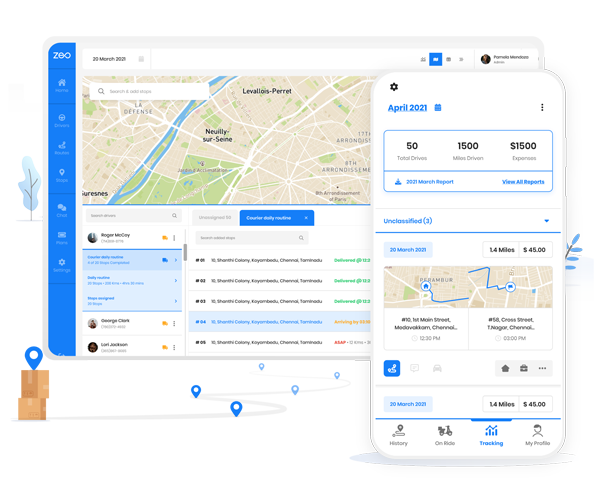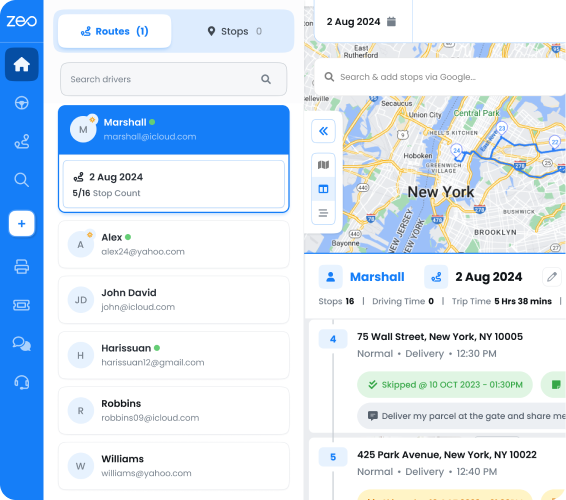Updated on: July 18, 2025
A locksmith business runs on urgency. Miss a single call, and chances are, someone else would get the job. But showing up fast is only part of the equation.
Of course, the locksmith industry is lucrative. But, are you ready to plunge with confidence?
Because what happens after the call matters just as much: how you quote, how you log the task, and how your team moves across locations.
So, if you’re looking to start a business as a locksmith, this guide will have you covered. We’ll go through what it takes to set up a locksmith business with a clear structure. The one that handles licenses, tools, pricing, and routing.
How to Start a Locksmith Business in 6 Steps
A legitimate locksmith business runs on compliance, clear systems, and fast execution. From licenses to mobile setup, everything has to work together if you want to stay responsive and trusted.
Regulations change depending on where you operate. Some states are strict. Others give more room, but you still need to show up prepared.
Here’s how to get your foundation in place.
-
Meet Legal Requirements for Your State
Start by checking what the law says in your state. Like California or Texas, may impose registration, proving your background, and even training under a licensed locksmith.
Apart from the state laws, local city or county permits may also apply. So, you’ll also have to look into city permits.
For instance, if you’re operating out of a mobile van, have nanging signs, etc., then those aspects need local clearance too.
- Checking if your state or city requires locksmith licensing or trade certification
- Register your business as an LLC or sole proprietor
- Look into any local permits if you’re running a van-based or mobile setup
- If required, get fingerprinted and clear any mandatory background checks
-
Apply for a Locksmith License
Again, getting a legal license to operate as a locksmith is something that varies by state. So, find out if your state requires it. And so, if needed, you’ll have to get a formal locksmith license to operate legally.
A license will prove that your business is legit, trained, verified, and cleared to work. Make sure you are able to demonstrate both technical knowledge and a clean legal record.
Note: Some states ask for formal classes or documented hours under a licensed professional.
- Complete the required training or log apprenticeship hours.
- Gather key documents: ID, registration proof, insurance, and training certificates.
- Submit your application to the state licensing board.
- Buy a surety bond if needed (usually $2,500 to $10,000 coverage).
-
Create a Business Plan and Secure Funding
As a locksmith company, you need a working model for customer acquisition, service pricing, team ops, and cash flow.
It’s something you’d think of once the paperwork is done. Ultimately, it acts as a map of how the business runs. Share this with investors, and it’s helpful even to you. This way, don’t burn through savings or scramble mid-month to cover fuel and tool costs.
increase fuel savings
Hassle Free Deliveries & Pickups!
Optimize routes with our algorithm, reducing travel time and costs efficiently.
Get Started for Free- Define your business scope: residential, commercial, automotive, or all three.
- Identify startup and recurring costs: tools, van, fuel, insurance, software.
- Set up monthly income targets and break-even timelines.
- Secure funds via personal capital, SBA microloans, or equipment financing.
-
Buy Tools, Equipment, and a Work Vehicle
Locksmithing is a gear-heavy business. So, no matter whether you’re working solo or scaling up, you do need a set of right tools that help you work faster, cleaner, and more reliably.
That said, you’d need everything from basic picks and plug spinners to high-end rekeying kits and electronic key programmers. A van (or SUV) becomes your mobile base. It needs space, compartments, and reliable GPS.
- Purchase essential tools: pick sets, drill, rekey kits, broken key extractors
- Get smart lock tools: key programmers, pinning kits, and diagnostic tools for cars
- Choose a work van or SUV with space for lock boxes, shelves, and signage
- Install storage units inside the vehicle to keep things organized on the go
- Consider a GPS, a dash cam, and a mobile hotspot for real-time tracking and job access
-
Decide Your Pricing Strategy
How much you price your services can define not just the revenue but also how customers perceive your reliability and fairness.
Charge too little, and it’s hard to scale. Overprice, and people move to competitors.
That’s why you need to figure out a pricing structure that reflects your time, urgency, and the tools required for each job.Usually, locksmiths use a base fee plus per-service charges.
- Set base rates for standard jobs (e.g., house unlocks, car lockouts, rekeying)
- Add urgency or night-time fees for after-hours calls
- Offer fixed packages for commercial services or long-term contracts
- Track average time spent per task so you’re charging by effort, not guesswork
- Revisit prices quarterly based on competition, tools used, and job type
-
Set Up Routing and Job Management
If you’ve got everything we discussed so far in place, then you’re ready to take orders. And that’s where you’d need a routing system with job management in place.
Because customers don’t wait around, and you can’t afford wasted time or mixed-up dispatches. That’s why having a solid routing and scheduling system is essential.
For this, you can get a head start with Zeo Route Planner. It helps the locksmith servicebusiness with advanced routing by assigning jobs, tracking technician movement, and making sure no stop gets missed.
- Use Zeo Route Planner to manage incoming jobs and route assignments
- Track vehicles live to know which tech is free or delayed
- Automate alerts to customers with ETA updates with Zeo
- Log service notes for every completed task to avoid confusion later
- If managing a team, give each tech access to a mobile app for real-time sync
Where Zeo Route Planner Fits In
For locksmith companies scaling from solo operators to small teams, Zeo’s locksmith routing software gives structure without slowing you down.
- Live Tracking: Know where each vehicle is, who’s stuck, and who’s free to take the next job.
- Optimized Routing: Automatically builds the fastest path for multiple stops, stop urgency, and time windows.
- Instant Job Assignments: Dispatchers can push new jobs directly to the technician’s mobile app.
- Customer Updates: Zeo sends ETAs to clients via SMS, keeping them informed without follow-up calls.
- Digital Proof of Delivery: Lock job completed? Collect e-signatures or photo proof in the app itself.
Conclusion
The job of a locksmith hinges on precision: everything from quoting the job to showing up fast and navigating between calls without delays. It’s that flow between tasks where most businesses lose time.
With Zeo Route Planner, you get the structure to that chaos. Leverage it for optimizing routes and availing real-time updates to get the edge you need to get past competitors.

Are you a fleet owner?
Want to manage your drivers and deliveries easily?
Grow your business effortlessly with Zeo Routes Planner – optimize routes and manage multiple drivers with ease.

increase fuel savings
Save 2 Hours on Deliveries, Everyday!
Optimize routes with our algorithm, reducing travel time and costs efficiently.
Get Started for Free























